Gold prices edge up amid Fed rate cut hopes; US-Russia talks awaited
Introduction & Market Context
World Kinect Corporation (NYSE:WKC) reported its second quarter 2025 results on July 31, showing mixed performance across its business segments. The company’s stock closed at $27.67, down 1.45% for the day, but rose 1.92% in aftermarket trading to $28.20 following the earnings release.
The global fuel services provider faced significant challenges in its Land and Marine segments while delivering strong results in Aviation. Despite these headwinds, the company improved its adjusted earnings metrics and continued to execute on its transformation strategy, which includes divesting underperforming assets and returning value to shareholders.
Quarterly Performance Highlights
World Kinect reported a GAAP loss per share of $6.06 for Q2 2025, compared to earnings of $1.81 per share in the same period last year. However, after excluding significant non-recurring items, adjusted earnings per share increased 23% year-over-year to $0.59, exceeding the $0.48 reported in Q2 2024.
The stark difference between GAAP and adjusted results stems from several major one-time charges, including $367 million in non-cash intangible asset impairments, $32 million related to a non-cash asset impairment in the Marine segment, and $82 million associated with the U.K. land business sale.
As shown in the following chart detailing the reconciliation from GAAP to adjusted EPS:

Consolidated volume decreased 3% year-over-year to 4,220 million gallons, while gross profit declined 5% to $232 million. Despite these top-line challenges, adjusted net income increased 16% to $33 million, and adjusted EBITDA rose 8% to $87 million, demonstrating the company’s ability to improve profitability despite revenue pressures.
The following table summarizes World Kinect’s key financial metrics for the quarter:
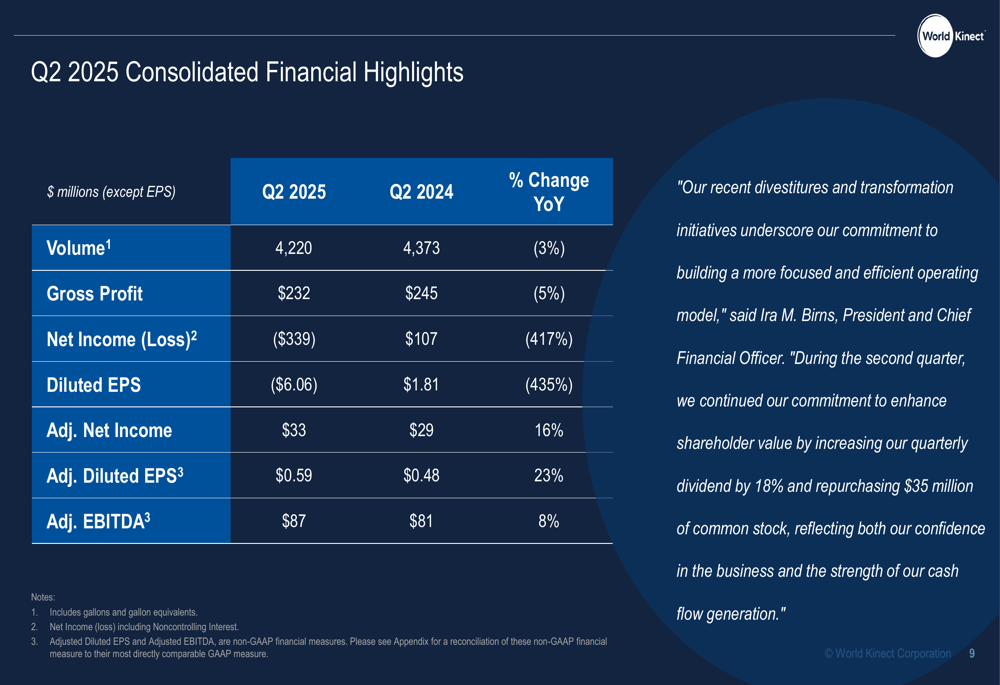
Segment Analysis
World Kinect’s performance varied significantly across its three business segments, with Aviation showing strength while Land and Marine faced challenges.
The Aviation segment was the standout performer, with volumes increasing 2% and gross profit rising 8% year-over-year to $138 million. Management attributed this growth to strong performance at airport locations in Europe and in the business/general aviation sector. Looking ahead to Q3 2025, the company expects Aviation gross profit to increase "meaningfully" year-over-year, driven by European on-airport operations and increased government activity.
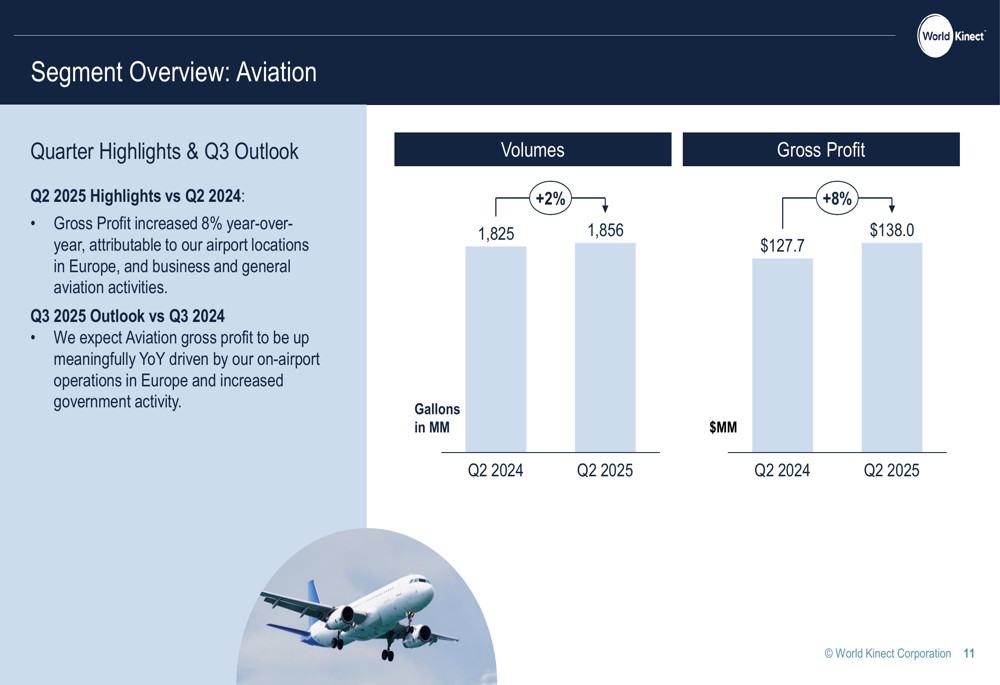
In contrast, the Land segment experienced a 7% decline in volumes and a 17% drop in gross profit to $67.4 million. These decreases were primarily due to the U.K. land business sale, the exit of certain North American operations, and lower profit contributions from the liquid fuels business in North America. Management expects sequential improvement in Land performance in Q3 2025, though year-over-year gross profit will remain lower.
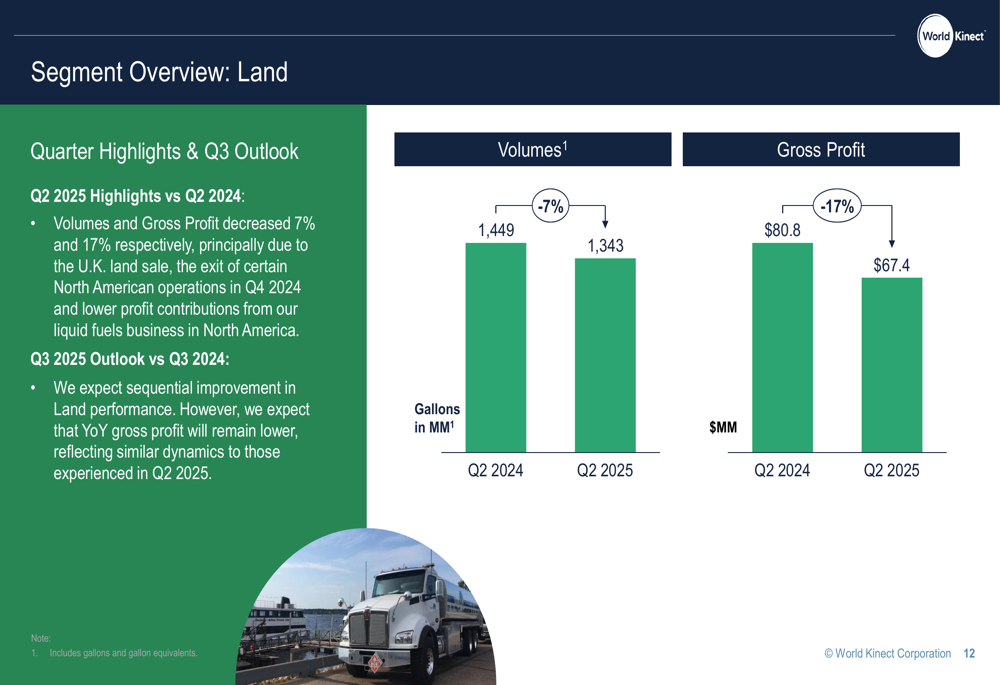
The Marine segment faced the most significant challenges, with volumes decreasing 7% and gross profit falling 26% to $27 million. This decline was attributed to reduced core commercial activity related to ongoing global trade uncertainty, a transaction tax settlement, and weaker performance at certain marine physical inventory locations. The outlook for Q3 2025 remains challenging, with gross profit expected to be down year-over-year due to continued weakness in certain physical inventory locations.
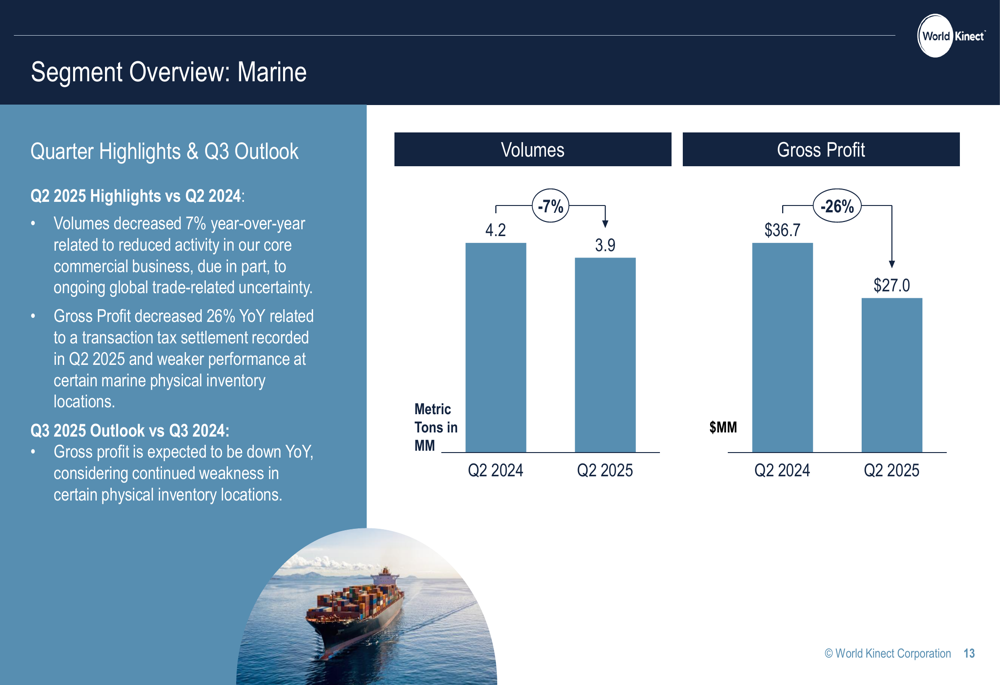
Strategic Initiatives
World Kinect’s President and CFO, Ira M. Birns, emphasized the company’s transformation efforts: "Our recent divestitures and transformation initiatives underscore our commitment to building a more focused and efficient operating model. During the second quarter, we continued our commitment to enhance shareholder value by increasing our quarterly dividend by 18% and repurchasing $35 million of common stock, reflecting both our confidence in the business and the strength of our cash flow generation."
The company’s focus on operational efficiency is evident in its 10% year-over-year reduction in adjusted operating expenses, which fell to $173 million in Q2 2025 from $192 million in Q2 2024. This trend is illustrated in the following chart:
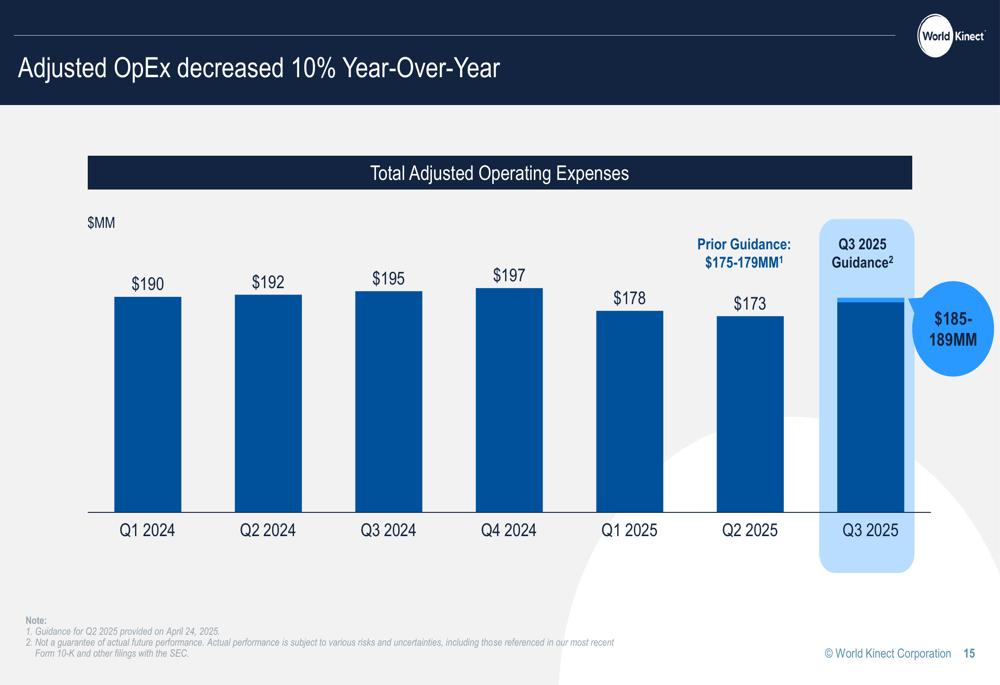
Interest expense also decreased by 7% year-over-year to $26 million, as shown below:
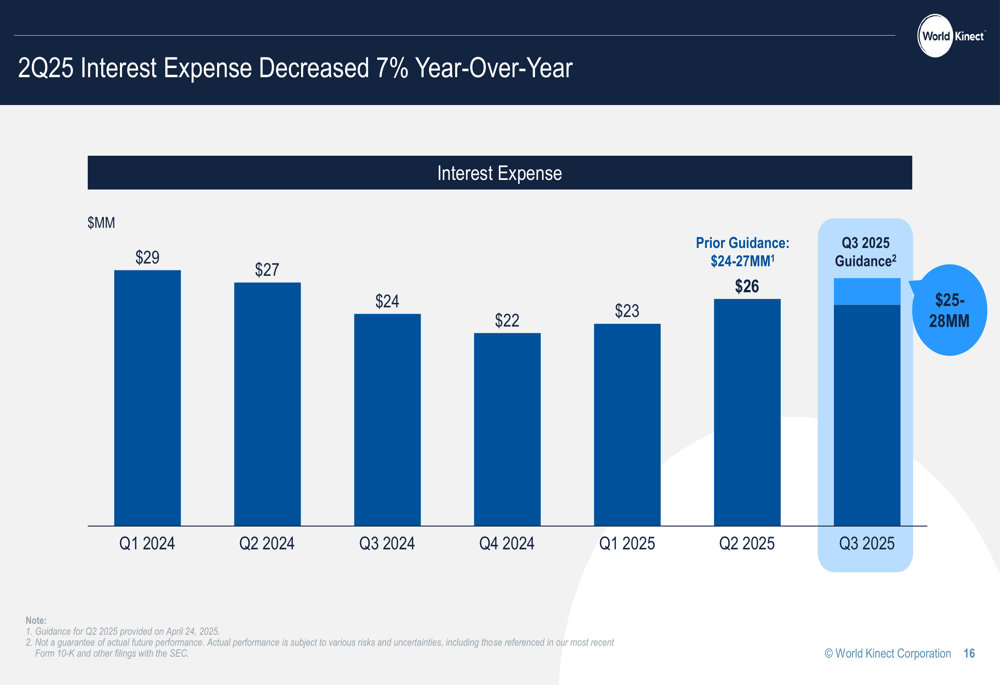
Despite some challenges, World Kinect continues to generate strong cash flow, with operating cash flow of $143 million and free cash flow of $113 million for the first six months of 2025. While these figures are down from $178 million and $146 million, respectively, in the same period of 2024, they demonstrate the company’s ability to maintain solid cash generation despite operational challenges.
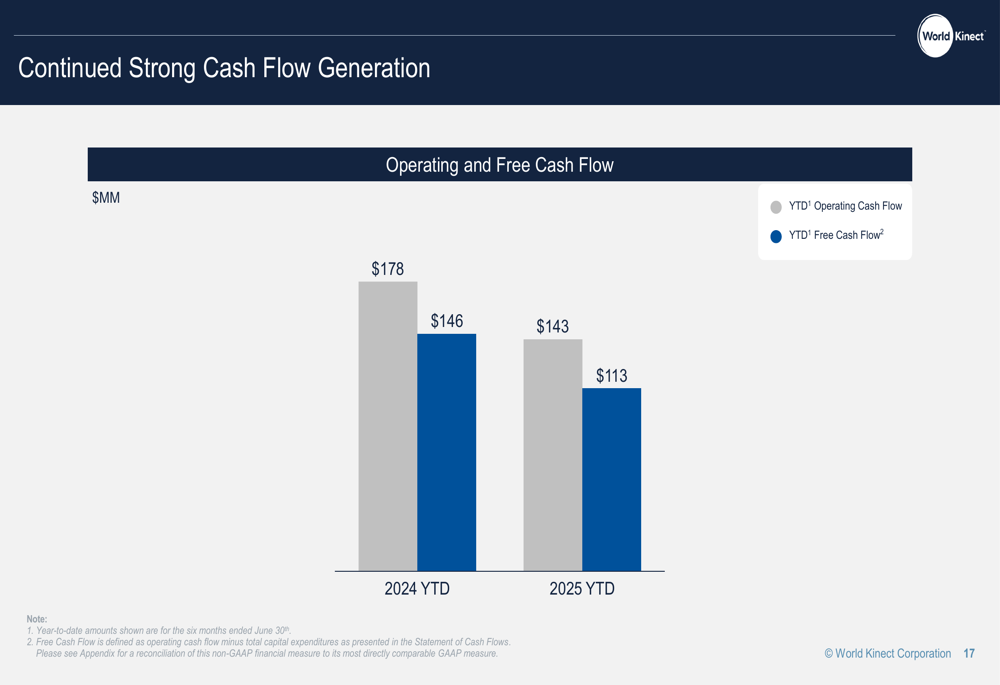
Forward-Looking Statements
Looking ahead to Q3 2025, World Kinect provided guidance for consolidated gross profit of $252-262 million, adjusted operating expenses of $185-189 million, and interest expense of $25-28 million. The company also lowered its full-year 2025 tax rate guidance to 20-22% from the previous 22-24%.
The following guidance summary compares Q2 2025 actual results with previous guidance and provides outlook for Q3 2025:
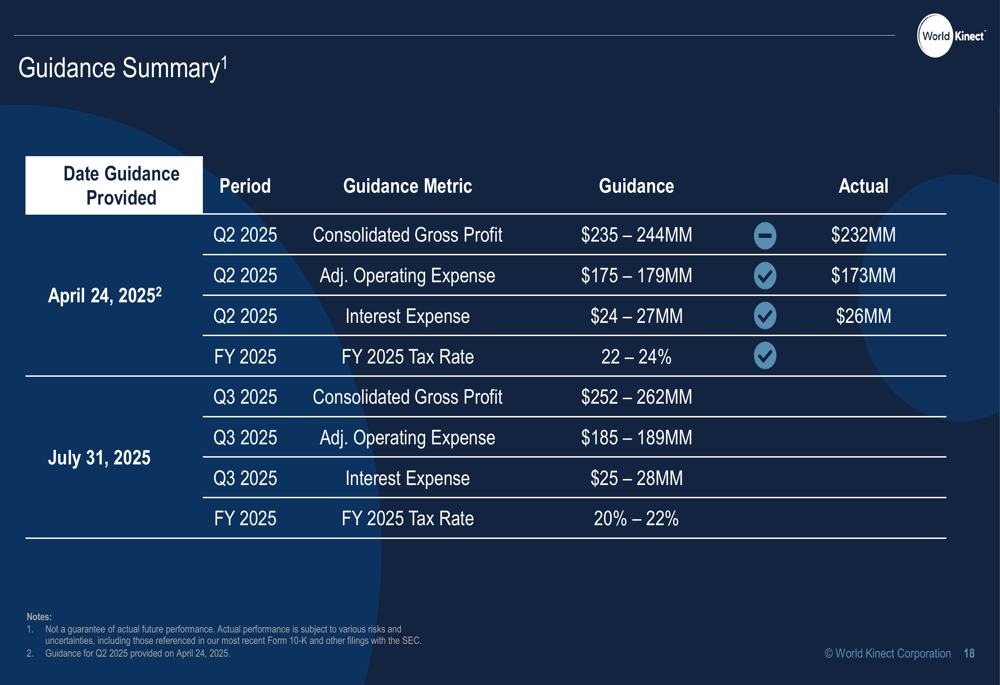
World Kinect’s consolidated adjusted gross profit is expected to improve in Q3 2025, as shown in the quarterly trend below:
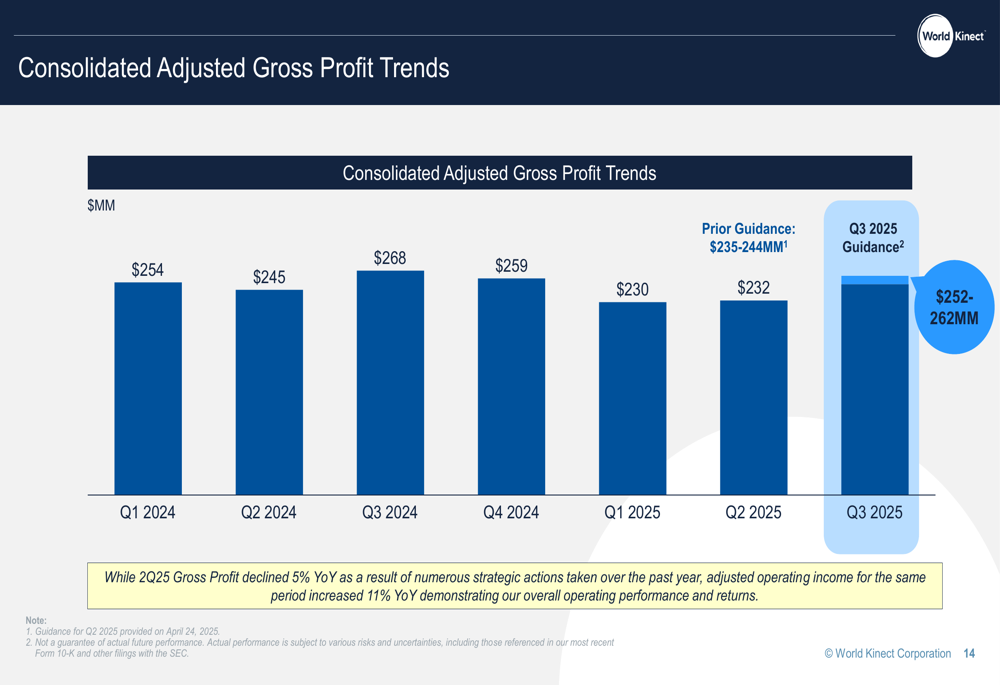
Chairman and CEO Michael J. Kasbar commented on the company’s performance and strategy: "Our Aviation business delivered strong results in the second quarter, underscoring the consistent value of our broad global offering. While results in our land business were below expectations, we continue to reshape the business enabling us to better focus on our most resilient, ratable, and higher return core activities that should drive enhanced performance in the medium-term."
This strategic reshaping appears to be yielding results, as the company’s adjusted operating income increased 11% year-over-year despite a 5% decline in gross profit, demonstrating improved operational efficiency and returns.
As World Kinect continues its transformation journey, investors will be watching closely to see if the company can successfully navigate the challenges in its Land and Marine segments while capitalizing on the strength in Aviation to drive sustainable growth and shareholder returns.
Full presentation:
This article was generated with the support of AI and reviewed by an editor. For more information see our T&C.
